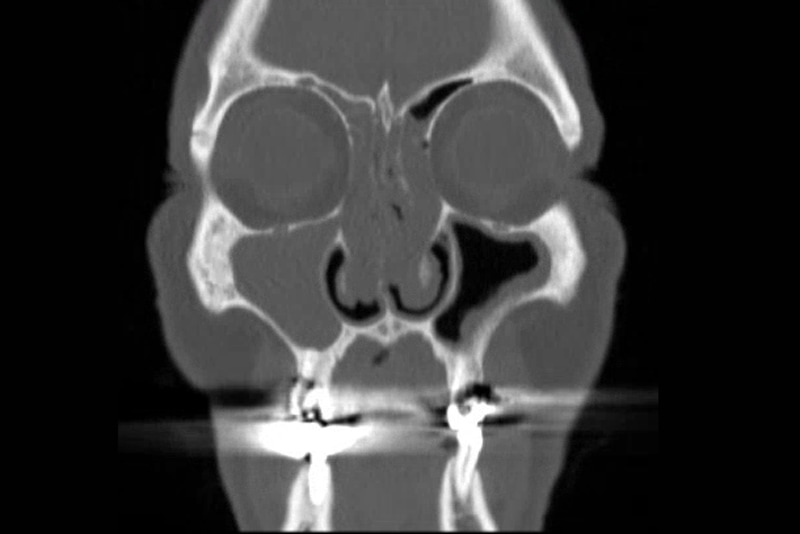Sinus assessment
Why?
- If your sense of smell is reduced or lost (hyposmia and anosmia).
- If your nose runs clean or dirty, especially on one side (rhinorrhea).
- If your nose is permanently blocked.
- If your nose is blocked alternately on one side and the other.
- If you have regular nosebleeds (epistaxis).
- If you have pain in the forehead, between, behind or under the eyes, or at the top of the skull,
- If your pain increases when you tilt your head forward.
- If you sneeze frequently.
- If you always seem to have a bad smell in your nose (cacosmia).
For whom?
ADULTS: The most common pathologies are allergic rhinitis, bacterial sinusitis, nasosinus polyposis (possible family history) and mycosis. Benign tumors (inverted papilloma first) and malignant tumors (squamous cell carcinoma and adenocarcinoma first) are much rarer. Clinical signs are not very specific to each pathology, and an endonasal examination at the very least is essential, with biopsy and imaging required on a case-by-case basis.
CHILDREN: Depending on age, the sinuses will be more or less developed, and there are specific or more frequent pathologies (rhinolith, nasopharyngeal fibroma, ethmoiditis, etc.). The sphenoid sinus develops between the ages of 4 and 15, the maxillary sinus and ethmoid sinus from birth to 15, and the frontal sinus from birth to 15, but especially from age 6 onwards. Cystic fibrosis and primary ciliary dyskinesia can lead to nasal polyps as early as childhood.
Where and how?
In the consulting room, after local anaesthesia with xylocaine © spray or xylocaine naphazoline © wicks (>15 years).
A sinus and nose check-up involves several steps:
- Questioning: The symptoms described above are investigated and their context clarified: duration, permanence, seasonality, with or without triggers, effectiveness of treatments tried, exposure to toxic substances, high-risk work.
- The endonasal examination, which directly explores the nasal cavities with a flexible nasofibroscope or rigid endoscope. The interior of the sinuses can be explored if they have already been surgically opened, or in the case of anatomical variations such as Giraldès’ accessory orifices, which make the interior of the maxillary sinus accessible.
Complementary assessment
In addition to the check-up described above, your ENT specialist may decide, depending on the case, to have the following procedures carried out :
- A sinus CT scan without injection* (except in special cases).
- MRI of the sinuses with injection.
- A blood biology test that varies according to the medical context.

Make an appointment for a sinus check-up in La Roche-sur-Yon, Vendée
Dr Antoine Delagranda will be happy to answer any questions you may have about sinus examinations. Dr Delagranda is a specialist in ENT surgery at the Clinique Saint Charles in La Roche-sur-Yon in the Vendée.

